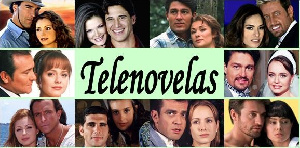 Telenovelas have become increasingly popular in Ghana
Telenovelas have become increasingly popular in Ghana
• The issue of soap operas corrupting morals have come back into the news
• Speaker of Parliament Alban Bagbin is the latest complainant and his first deputy shares his sentiments
• GhanaWeb looks back at some five top telenovelas, soap operas from yesteryear
Speaker of Parliament Alban Bagbin during a recent book launch spoke about the negative impact of telenovelas especially on women – who are believed to be the main patrons.
His views have been backed and flaked with backers stressing that foreign morals were being imported to us subconsciously whiles the flak is from those that believe that these films are a source of entertainment and that they tell everyday stories.
Years back, telenovelas were alien to television screens, one of the key factors could be that there were fewer channels with the main one being the state broadcaster.
As the media space opened with more operators and the chase for content to fill program lineups, telenovelas sneaked in and now can be declared a full-blown mainstay for want of a better word.
GhanaWeb looks back at five early day telenovelas/soap operas that graced our screens
Isaura on GTV in the 1990s
According to Wikipedia, Escrava Isaura (Isaura: Slave Girl) is a 1976 Brazilian telenovela produced by Rede Globo, originally broadcast between October 11, 1976, and February 5, 1977.
The film was based on the 1865 novel of the same name by 19th-century abolitionist writer Bernardo Guimarães, it tells the story of the struggles of Isaura, a mixed-race slave, to find happiness during the Brazilian Empire.
A present-day remake was produced in 2004 based on the original one that was produced in the 1970s.
Acapulco Bay on TV3 (1995)
This was one of the earliest telenovelas that had people glued to their TV sets. So captivating was it that someone actually lost their house in an inferno after they procured a generator to watch the show and guess what, TV3 carried the report of the inferno.
To the story, it was of two brothers, one greedy and power-hungry called Max who stole the identity of his stepbrother before tricking the latter’s girlfriend Rachel into a civil marriage.
Tony survives a helicopter crash orchestrated by Max, he lives on a faraway island and miraculously finds his way back home before Racheal falls in love with him – her proper man.
Last show, love prevails and death befalls Max as his complex web of ills collapse.
Sunset beach – TV3
Still with TV3, the channel served a North American soap opera with Sunset Beach. The series followed the love lives of the people living in the Orange County coastal area named Sunset Beach, on the coast of California.
It had a series of stories that were largely intertwined but the main characters were Meg and two brothers – Ben, the man she loved and his evil twin, Derek.
It had a myriad of relationships, friends and foes alike, betrayals and backstabbing and of course lots of intrigue and suspense dotted all over.
Bold and Beautiful – Metro TV / GTV
This American soap opera run on GTV and at a point on Metro TV.
According to Wikipedia, the Bold and the Beautiful debuted on March 23, 1987. Set in Los Angeles, it centers around the Forrester family and their fashion house business, Forrester Creations.
Like many soap operas, B&B looked into the lives of wealthy families and how love affairs, scandals, and betrayals affect each of the family members and their relationships with each other.
Esmeralda on TV3 (1997)
In the case of Esmeralda, the show pitted a rich family against a poor countryside girl who lived with an old relation – and this girl was blind.
She will become a source of tension in the rich family because their only son, Jose Armando, will settle for none other than her even though per the family’s arrangement, he had another rich girl he was to marry.
She will get back her sight and last show, marry her man who fought for her.
The craze will be followed by La Usurpadora (1998), Rosalinda (1999), Juana La Virgen (2002) and many more -name them if you remember.
“The reason why the Mexican soaps are popular is that the stories they tell are the same stories of humanity everywhere: stories of jilted and unrequited love, jealousy, greed, backbiting and other follies and foibles of life,” ace writer Mr. Gyan Apenteng averred in his piece titled: “Ghanaian Lives and Mexican Soap Operas.”
He goes on to add: “the difference between then and now is that people in broadcasting looked to other values apart from profit: professional standards, ethics, satisfaction and pride mattered as much as money …”
Whatever the underlying reasons, whatever the dangers they pose to our creative industry, these telenovelas are now on Primetime TV competing with major news and national interest broadcasts.
The sponsors are loving them and it is clear that people are loving them, the array is expanding even as local content shrinks. Time for a law to regulate them? Maybe!